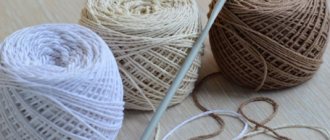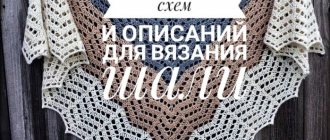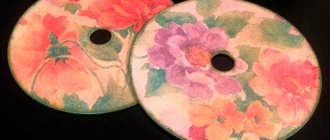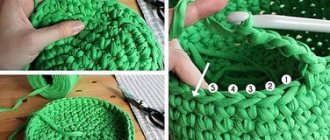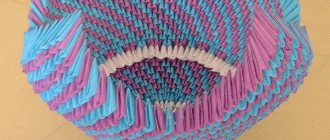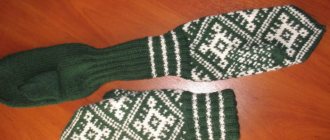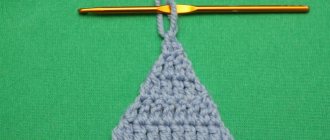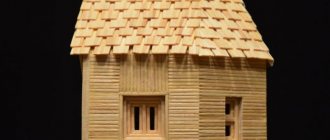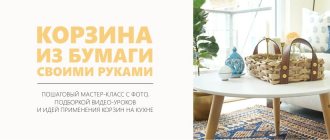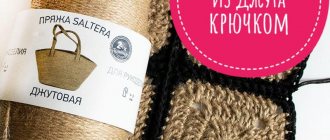In strong winds and frost, nothing warms our children better than a soft and cozy scarf. This master class is dedicated to just such an accessory as a scarf collar! After studying our descriptions and diagrams, you can easily knit an original scarf with knitting needles for a girl and a boy with your own hands! We hope that our lesson will be useful for you, and that winter and autumn walks will give you only positive things.
How to choose tools and materials
All children's scarves are mainly used to warm the baby during the cold season, which means the thread from which the scarf will be knitted must be quite voluminous and warm. But do not forget that the child’s skin is very delicate, and the thread needs to be soft, non-prickly and hypoallergenic.
It is good that the composition of such yarn does not exceed 40–50% wool; if possible, acrylic and bamboo are present. The length of the thread in a skein can be no more than 350 m per 100 g. The knitting needles on which the children's scarf will be knitted must be selected depending on the volume of yarn: knitting needles must be taken 2 times thicker than the thread. So, for example, for yarn with a length of 350 m, the recommended needle size is 2.5 - 4.
But, if the knitting is too tight, you need to take larger knitting needles, and vice versa, if the knitting is too loose, the knitting needles will be smaller.
Typically, the required knitting needle size is indicated on the yarn package. The size of the scarf will depend on the age and height of the child for whom the product will be knitted. To determine the number of loops that will need to be cast on for the required size, it is advisable to knit a scarf sample measuring approximately 10x10 cm.
Material
The more natural fibers a material contains, the better. For children's clothing, this is an almost unshakable rule. The warmest types of yarn:
- angora;
- alpaca;
- merino;
- goat fluff.
They are pleasant to the touch and conduct air well, which means they conserve heat. But a small percentage of synthetics should still be present - this gives the product strength and elasticity. The ideal combination is 80% wool and 20% acrylic.
Mercerized cotton is good for demi-season scarves.
How to knit a simple classic scarf: step-by-step instructions
Few beginning craftsmen know how to knit a scarf for a child. There are two simplest classic options that everyone can do, even beginner knitters: garter stitch and English rib. Both patterns allow you to get a double-sided fabric, that is, the front and back sides of the children's scarf will look the same.
Garter stitch involves knitting in turning rows with knit stitches, in the round: odd rows are knit, even rows are purl. To prevent the fabric from stretching while working in turning rows, the first loop is always removed unknitted, the last one is knitted purl-wise. A scarf knitted with this pattern will be quite voluminous, but not very soft.
You can diversify the product with bright multi-colored yarn.
The technique of knitting with an English elastic band should be used after having already mastered the basics of knitting on knitting needles because when making such an elastic band, knit and purl loops will be used. The scarf will be both voluminous and very soft.
Step-by-step instruction:
- On the knitting needles you need to cast on a number of stitches that is a multiple of 3 plus 2 edge stitches.
- The first loop is removed, the last one is knitted.
- In the 1st row, the loop that goes behind the edge is tied with the front one, a yarn over is made, the next one is removed. This repetition must be performed until the end of the row.
- In the 2nd row: the first one is removed, then the loop is knitted together with the knit yarn over, the next loop is re-knitted without being knitted. Alternation must be performed until the end of the row.
- Perform this repetition of the first and second row until the required length of the scarf is reached. Upon completion of knitting, close the loops, cut the thread and hide the remaining tip with a crochet hook.
Making a stole
When making a scarf for a girl with knitting needles, you can use any pattern. However, various openwork options are recommended for stoles. Moreover, for warm stoles it is better to purchase not thick wool yarn, but mohair or angora. These knitted threads are very warm and thin, so they are perfect for the intended accessory. Since the openwork is quite complicated for beginners, we suggest readers to study the video instructions. In it, an experienced craftsman talks about how to decorate a stole with openwork leaves. That is, he analyzes in detail the technology of making an openwork scarf with knitting needles.
Original scarf-loop for a boy
Many mothers are interested in how to knit a scarf for their beloved child so that it is warm and easy to use. An option such as a loop scarf, which will fit tightly around the boy’s neck, will not come undone and will warm him in cold weather, will help solve these problems. For such a scarf you need a skein of bulky warm yarn (wool no more than 40%), needles No. 4 and a knitting pin.
Step-by-step instruction:
- You need to cast on an even number of stitches on the knitting needles, which is a multiple of 4, in accordance with the selected scarf width. Knitting is done with a 2×2 rib, the first stitch is always removed, the last one is always knitted purlwise.
- In the 1st and all subsequent rows, starting from the second loop, alternate 2 knit and 2 purl stitches until the end of the row. Knit to a height of 10-15 cm.
- Next, the product needs to be divided into 2 equal parts to make a loop: it is recommended to transfer the first half of the loops onto a knitting needle, and the second half onto a pin. Knit the first part of the loops placed on the knitting needle. Continue knitting with 2×2 rib. Having knitted to a height equal to the width of the scarf minus 2 cm, slip the loops from the pin onto a free knitting needle, and the loops from the knitting needle onto a pin. Using the free second tip of the thread in the skein, knit the second half of the loops to a height equal to the number of knitted rows on the first half of the scarf, cut the thread
- Remove all the loops onto one free knitting needle in such a way that first the loops are thrown from the pin, and then the loops from the second knitting needle. Continue knitting for the required length of the scarf, which will be equal to the circumference of the child’s neck, plus a few cm for the volume of outerwear, plus a length equal to the length of the already knitted part.
- Close the loops, cut the thread, hide the end. You can decorate the scarf with pompoms or tassels.
Collar scarf in the shape of a bow for girls
A bow-shaped collar scarf for a girl is a more complicated version of a loop scarf.
To knit such a scarf for a child you will need:
- a description of how to knit a scarf;
- a skein of warm and voluminous yarn, which contains 40% wool, 40% acrylic and 20% bamboo, thread length 350 m;
- a set of two straight knitting needles No. 3 and a set of 2 straight knitting needles No. 2;
- large knitting pin.
The length of the scarf will be equal to the circumference of the child’s neck + 5-7 cm for the thickness of the clothing if the scarf is worn over it. The scarf will be made using the garter stitch technique, the loops are knitted on the front wall, the yarn overs are knitted on the back wall.
Step-by-step instruction:
- Cast on 4 stitches on needles No. 3.
- In the 1st row, the 1st stitch is removed, a yarn over is made, the next 2 stitches are knitted, a yarn over is made and the last loop is knitted purl.
- In the 2nd row, the first loop is removed again, the second (yarn over) is knitted, the next 2 are knitted, then the yarn over is knitted with a knit stitch and the last one is knitted with a purl stitch.
- Then you need to make an increase in each odd row in the same way as the first row: yarn over after and before the edge loop. Increase to the desired width of the ball.
- Each subsequent purl row is knitted similarly to the second row, no increase is performed.
- Then you need to perform garter stitch without changes to a height of 7 - 10 cm.
- Next, proceed to the formation of the loop itself. It is recommended to knit it on needles No. 2 to make it more elastic. To make a loop, you will need to take knitting needle No. 2 and a pin and remove the loops on them one by one from knitting needle No. 3 (the first loop is removed onto the knitting needle), thus dividing them into two equal parts.
- Knit the first part of the loops from the needle in garter stitch to a height of 5 cm. Then slip the loops from the pin onto the second needle No. 2, and transfer the knitted loops from the first needle No. 2 onto the pin. Knit the loops removed from the pin to a height of 5 cm, using the second end of the thread in the skein for work. When the required height is reached, cut the thread. Alternately removing the loops from knitting needle No. 2 and from the pin, transfer them all to knitting needle No. 3. Knit in garter stitch on needles No. 3 to the required length of the scarf.
- Proceed to knitting the second loop in the same way as the recommendations described above, that is, dividing the fabric into two equal parts, alternately removing the loops on a No. 2 knitting needle and a pin. Also make the second loop to a height of 5 cm. Next, connect the fabric together.
- Work in garter stitch to a height of 7–10 cm (the number of rows is equal to the number knitted in step 6).
- Next comes the decrease in stitches. In each front row, every 2 and 3 stitches are knitted into one from the beginning and from the end of the row. The purl row is knitted without decreasing with knit stitches.
- Finish knitting as soon as there are 4 loops on the knitting needle. Cut the thread and hide the loose ends.
Fashionable styles and models
Scarf collar
In everyday life, such a scarf is called a shirtfront. Very functional item! This accessory does not get lost when moving, fits snugly to the neck and covers part of the chest and shoulders. Pay attention to the edge of the shirtfront: it can be rounded or square. Usually boys prefer the square version, while girls prefer the softer, rounded one.
The shirtfront can be worn over the head, or it can have a clasp at the back. Clasp types:
- buttons;
- hooks;
- "Velcro" - Velcro.
If the hooks and Velcro remain inside, then the buttons can be a decorative element and be in the most visible place.
When choosing a collar scarf, it is worth considering that it is worn under outerwear. Accordingly, it does not necessarily have to be combined with a jacket or coat. But there should be harmony with what is worn underneath - a blouse, a jumper, a bodysuit. You can have several similar scarves in different colors, or you can get by with one universal one.
With pom-poms
Fluffy wool balls add fun and lightness to knitted clothes! You can no longer hide such a scarf inside; its place is on the neck of the coat. Most often, pompoms are located at the ends of the scarf - one at a time or several at a time.
The absolute hit of recent seasons is large fur pom-poms. They can be purchased at sewing supply stores or online. The accessory, decorated with a pompom made of natural fur, looks expensive and stylish.
Pom-poms sewn along the entire length look very elegant on a children's scarf. They can be strengthened randomly, or you can lay out some kind of pattern with them.
With the help of pompoms you can diversify any banal scarf that you have. Choose a suitable color combination and make pompoms with your own hands, as shown in the picture:
By the way, tassels look no less original on children's scarves. This option is good for both boys and girls.
Knitted sets
(and maybe also gloves or mittens) is the culmination of the look. A harmonious combination of a headdress and a scarf with each other and with outerwear always attracts the attention of others.
- Kids and their mothers really like animal-themed accessories. Owl hats, hats with ears (hares, bears, cats), hats with eyes - the scope for imagination is unlimited.
Please note that the headdress in this case is the main accent. The scarf is more modest and only supports the main motive. But it can also be the other way around. Animal scarves, for example, a cat scarf, a snake scarf, a crocodile or a dachshund, look original and exclusive. The hat here should be laconic so that the image is not overloaded.
- For older children, a knitted set can be closer to the adult version. However, an interesting knitting (for example, with “bumps”), bright colors of yarn or an interesting pattern will definitely emphasize the young age of the owner.
Scarf tie
An unusual scarf model that is suitable for both adults and children. At one end of such a product a loop is knitted into which the opposite end is threaded. The accessory ends up crossed on the neck, like a tied tie. At the same time, no knots, which children don’t like so much!
At first glance, this is more of a girlish scarf, although you can also find a “boyish” version: it’s all about the color, length and possible design of the ends. For kids, you can knit an animal face or any other decoration on the loop. This accessory is quite appropriate to wear not only outdoors, but also indoors.
Universal scarf
Before you start making such a scarf for your baby, it is recommended to decide on its size and color. The size of the scarf will depend entirely on the wishes of the craftswoman. To create it you will need 2 skeins of yarn of different colors, containing 40% wool, 20% bamboo and 40% acrylic, thread length 350 m per 100 g), knitting needles No. 3.
The easiest way to knit a scarf for a child is to use garter stitch (all stitches are knitted).
Step-by-step instruction:
- Before starting work, it is recommended to make a small test sample, wash and dry it, so as not to bandage the finished product later.
- It is recommended to cast on 3 stitches on the knitting needles and knit in turning rows with the front stitches, with the exception of the edge stitches: the first one is always removed, the last one is done purl-wise.
- The increase in loops will be carried out in each 4th row, 1 loop before the last edge loop: the first 3 rows are knitted without changes, in the fourth row 2 knit loops are knitted into the third loop - one behind the back wall, the other behind the front. Next, the next 3 rows are knitted without increasing; in the eighth row, 2 knit stitches are again knitted into the penultimate loop - behind the back and behind the front wall of the loop of the previous row.
- The increase is carried out until the desired width of the scarf is reached. After completing the last decrease, you must also knit 3 rows, in the second, switch to a thread of a different color. Next comes a decrease.
- The first loop in the row is removed, then the remaining loops are knitted except for the penultimate 2 loops. They are knitted in one knit stitch behind the front wall, followed by an edge purl stitch.
- Repeat decreasing every fourth row until there are 3 stitches on the needle. Finish knitting, cut the thread, hide the end of the thread.
The scarf is ready. It can be additionally decorated with multi-colored pompoms or tassels.
How to calculate thread volume
Before you start working, the question always arises: how many skeins of yarn should you buy?
There are several ways to find out.
Method 1
An online calculator is the easiest way. In order to find out the required amount of yarn, knit a sample with an area of approximately 10 by 10 cm and enter the data into the calculator. But you need to take into account that this is a very approximate calculation, so it is better to add one skein to the result.
Method 2
We use information. If you use a description, it will usually indicate how many grams or skeins of a particular yarn are needed. And this data is always written on the yarn packaging.
Method 3: manual calculation
The result will be the most accurate. We knit a sample measuring approximately 20*20 cm (or 1 report) and note how much yarn was used for it. Then we divide this length by 400, so we will find out how much yarn is needed for 1 square cm of product. We calculate the desired area of the finished work and multiply it by the previous indicator.
You will receive the required number of meters of yarn. Now all that remains is to look at the footage of one skein on the label and count how many skeins are needed.
But you can’t buy yarn back to back because this number doesn’t take into account unforeseen expenses.
Checkered scarf
A scarf with a checkerboard pattern is knitted very simply, and it turns out to be double-sided, that is, both the front and back sides look the same.
To create such a scarf you need:
- skein of bright yarn 100 g / 350 m, wool 40%;
- knitting needles No. 3;
- a crochet hook, not too thin and strong cardboard measuring 10x12 cm, will be needed to create tassels for the scarf.
Step-by-step instruction:
- Cast on 30 stitches + 4 edge stitches on the knitting needles. Knit in turning rows.
- Edge stitches: the first is removed, the second is always the front one behind the front wall, the penultimate one is removed, with the thread passing before work, the last one is the back side behind the front wall.
- Main drawing:
- 1st row - alternating 6 knits behind the front wall, 6 purls behind the back until the end of the row.
- 2nd, 4th, 6th row: 6 loops are made purl behind the front wall, 6 - knit behind the back to the end of the row.
- In the 3rd and 5th row: alternate 6 knits behind the back wall, 6 purls behind the front until the end of the row.
- 7th row: it is necessary to change the arrangement of the squares, that is, over the front loops, purl ones are knitted behind the back wall, over the purl ones, knit ones are knitted behind the front wall.
- Next, knit five more rows over the knit stitches behind the back wall, over the purl rows - purl over the front wall.
- 13th row – change the squares again. Knit to the required length of the scarf. Close the loops
- If desired, the scarf can be decorated with tassels:
- Wrap the thread from which the scarf was knitted 33 times around the narrow side of the cardboard. Cut the threads on the cardboard in half, so that the result is 33 threads 20 cm long.
- Take your hook and thread it through the first cast-on loop. Fold the thread in half and pull out a small loop with a crochet hook. Pull the remaining tip of the thread into the resulting loop. The brush is ready. Repeat for the remaining 32 stitches. Using a hook, pull the tip of the thread that remains during the knitting process into the edge loop and fasten. This will make 34 tassels.
- Make tassels for the other edge of the scarf in the same way.
Scarf with voluminous braids
For beginning craftswomen who want to knit a scarf for their child, a scarf with voluminous braids is an option for how to very quickly knit an interesting, warm and uncomplicated version of a children's scarf.
In order to knit such a scarf, you will need a skein of bright yarn, which includes wool, preferably soft and non-prickly (the length of the thread in a skein is 350 m), straight needles No. 3 and a knitting pin, which will be needed to form braids.
Step-by-step instruction:
- The scarf with braids is knitted in turning rows. You will need to cast on 39 stitches on the knitting needles.
- First row: the first loop is removed, it is not knitted, then 12 knit stitches are made behind the back wall, then a pearl pattern follows, that is, for 13 loops, 1 purl and 1 knit stitch alternate, the row ends with twelve knit stitches and 1 purl - edge loop .
- The second row and all the following even rows: the first loop is removed, 12 purl loops are knitted, then a pearl pattern of 13 loops - alternating purl and knit stitches (start alternating in the same way as in the first row, from the purl loop), then 13 purl stitches, including the last edge. The series is completed.
- In the third row, the formation of the braid begins: the first loop is removed, 4 knit stitches are knitted, the next 4 loops are re-pinned before knitting, another 4 knit stitches are knitted, then the loops from the pin are returned to the knitting needle and also knitted. Then comes the pearl pattern on 13 loops and another braid is formed: just like at the beginning of the row, 4 knit stitches are knitted, the next 4 are re-knitted onto a pin in front of the knitting, the remaining 5 loops are knitted, including the edge one, with knit stitches, the loops are returned to the knitting needle with pins and knit - 3 knit stitches, and 1 last stitch is knitted.
- The fourth and sixth rows are knitted similarly to the second; the fifth is similar to the first.
- In the seventh row, 5 stitches are transferred to the pin at work, the next 4 are made with knit stitches, then the loops from the pin are also knitted with knit stitches, another 4 knit stitches are knitted, followed by a pearl pattern of 13 stitches. Next, 4 loops are removed onto a pin, the next 4 are knitted, the next 4 loops are knitted from the pin, and the last 4 loops are knitted with knits and 1 edge loop is knitted with a purl. The series is completed.
- The eighth row is performed similarly to the second. Next, the repeat, consisting of the first eight rows, is repeated to the desired height.
- When the length of the work reaches the desired height, it is necessary to close the loops, cut the thread, and hide the end. The scarf can be decorated with tassels.
Voluminous knitting
Bulky items look warm and cozy, but since they do not protect from the wind, they are more suitable for autumn or spring. As we found out, it is easy to knit a scarf with knitting needles: the new models in the photo will help you decide on your choice. Voluminous scarves are always in fashion!
In order to make a voluminous scarf, you just need to do the work with large knitting needles and thick yarn. But if you need a very voluminous knitting, then you can make a scarf using your hands instead of knitting needles.
Materials: thick, lightweight yarn.
We cast on so many loops on the right hand so that the width is approximately 30 cm. We remove the first loop on the left hand. With our right hand we take the working thread, pull it through the second loop and put it on our left hand. We continue to knit either in garter stitch or satin stitch. Having reached the desired length, close the work in the usual way. When knitting bulky items by hand, there is no point in making complex patterns, since they will not be visible.
Gathered scarf
In the process of knitting such a scarf, you will need 1 skein of bright, warm, voluminous and non-sharp yarn (length of thread in a skein is 350 m, composition: 40% wool, 40% acrylic and 20% bamboo), 2 sets of knitting needles: No. 2 and No. 5.
Step-by-step instruction:
- On needles No. 2, cast on 22 stitches, including 2 edge stitches.
- From the 1st to the 4th row inclusive, knit in garter stitch (knit and purl rows are knitted exclusively with knit stitches behind the front wall).
- In the 5th row, switch to needles No. 5. The first loop is knitted behind the front wall. In the remaining loops, except for the last edge loop, 2 facial loops are knitted: the first for the front wall, the second for the back, thus, the number of loops increases almost 2 times, there are 42 loops. The last stitch is also knitted behind the front wall.
- From the 6th to the 12th row inclusive, knit in stockinette stitch on needles No. 5, that is, purl rows are made with purl stitches, and knit stitches with knit stitches.
- In the 13th row, you need to switch to needles No. 2 and reduce the number of loops to the original: the first loop is a knit stitch, then every 2 loops are knitted into one knit behind the back wall, the last one is a knit stitch.
- From the 14th to the 18th row inclusive, work in garter stitch.
- Repeat the repeat from the 5th to the 18th row until the required length of the scarf. Then finish knitting - close the loops.
Warm snood collar
A seamless warm snood collar with a rice pattern is the simplest example of how you can quickly and beautifully knit a warm and cozy scarf for the winter for your child. To create it you will need a skein of yarn 240 m long, 100 g (50% wool and 50% acrylic), circular knitting needles No. 3, and a knitting marker.
To determine the required size, you need to measure the volume of the child’s head: along the bottom of the chin, going around the face along the line of the crown.
Before starting work, knit a sample measuring 10x10 cm, wash, dry, calculate and cast on the needles the required number of loops, which will be a multiple of 2 and 1 additional loop to close the knitting in a circle. Knitting in a ring. Place a marker between the beginning and end of the row.
Step-by-step instruction:
- 1st row: alternate until the end of the row: 1 knit stitch, 1 purl stitch. The row begins with a knit stitch and ends with a purl stitch.
- The 2nd row is knitted similarly to the first.
- 3rd row: alternating 1 purl and 1 knit. The row starts with a purl stitch and ends with a knit stitch.
- The 4th row is performed similarly to the third.
Repeat from the 1st to the 4th row to the required snood height. Close the loops and hide the thread.
Double-sided Tire pattern.
This pattern must be knitted in one color!
As you can see, the motley thread is superfluous here. Great pattern for hats, scarves, snoods. Pattern diagram "Tires"
We knit even rows according to the pattern.
Scarf-hood
In order to knit a scarf-hood for a child aged 7 - 9 years, you will need 3 skeins of warm bulky yarn 100 m/100 g, containing 25% wool, circular knitting needles No. 5, a sewing needle, a marker for the beginning of a row, a hook No. 5 ,5.
Step-by-step instruction:
- Cast on 80 stitches on the knitting needles and one extra stitch to join the knitting in a circle.
- Knitting begins with a pearl pattern: alternate knit and purl stitches at the end of the row. The loops are knitted behind the front wall. At the end of the row, so as not to get confused later when knitting, hang a special marker.
- In the second row, the alternation of stitches changes: the purl stitch is knitted above the front stitch of the previous row, and the knit stitch is knitted above the purl stitch.
- From the 3rd to the 6th row inclusive, the 1st and 2nd rows are repeated.
- From the 7th to the 22nd row, knit stitch is knitted (all stitches are knit stitches only).
- 23rd row: the first 37 loops are knitted behind the front wall, then 6 loops must be closed - for this, loops 38 and 39 are knitted, then the 38th loop is removed from the knitting needle through the knitted 39; the 40th loop is knitted, removed from the needle 39, and so on up to the 43rd loop inclusive. The next 37 stitches to the end of the row are knitted.
- From the 24th row, the transition to knitting in turning rows is made. It is necessary to knit a row to the closed loops, the last loop before the closed one is knitted purl-wise behind the front wall, the knitting is turned.
- 25th row: the first loop is removed unknitted, then all loops to the end of the row (until the next closed loop) are knitted purl over the front wall.
- In the 26th row, decrease two stitches: knit the first and last 2nd and 3rd stitches into one.
- Next, continue to knit in stockinette stitch (that is, the front rows are knitted with facial stitches, the purl rows are knitted with purl stitches, the first edge stitches are always removed, the last ones are knitted with purl stitches) until the required height of the hood.
- Once the required height of the product is reached, sew the two halves of the hood using a knitted seam.
- Proceed to knitting the lapel. To do this, cast on the front loops, starting from the first closed loop in the 23rd row, around the entire circumference of the resulting hood; their number should be odd in order to close the product into a circle. Knit all the cast-on loops with a pearl pattern, repeating the steps from the 1st to 2nd row of the beginning of knitting, to a height of 12 rows. Then sew on the resulting lapel, that is, sew the 1st and 12th rows of the lapel together using a knitted seam.
- Start knitting ears. To do this, crochet 6 single crochets into the amigurumi ring. In the second row, increase by 1 single crochet in each column of the previous row, that is, you will end up with 12 stitches. In the 3rd row, increase every second stitch, resulting in 18 single crochets. In the 4th row - an increase is made in every third column, resulting in 24 columns. The 5th, 6th and 7th rows are performed without additions. The first eye is ready, cut the thread, leaving a long tip for later sewing it to the hood. Knit the second ears in the same way. Fold each ear in half and sew to the hood.
Reversible scarf with pompoms
A reversible scarf is a scarf that looks equally good on both the front and back sides. In order to knit a universal double-sided scarf for a child, you will need 3 skeins of thread of 50 g (130 m), 25% wool, knitting needles No. 2, 1 additional knitting needle for forming a braid, crochet hook No. 3. Abbreviations: l.p. – front loop, from p. - purl loop.
A knitted scarf with the description in the pattern for a child can be worn on both sides.
Step-by-step instruction:
- Cast on 40 stitches + 2 edge stitches on the knitting needles. Knit stitches are knitted on the back wall, purl stitches on the front wall. The scarf is knitted in turning rows. The first loop is always removed unknitted, the last one is purled.
- Main drawing:
- in the 1st, the first edge is knitted (braid element: (2 p., 2 p.) × 2 times; elastic band - 1x1 - 8 times) - do it twice. Complete the row 2 (2 l.p., 2 i.p.) × 2 times and the last edge.
- The 2nd – 4th row is performed similarly to the 1st.
- in the 5th row, start forming a braid: edge loop, (using an additional knitting needle, re-knit stitches 5 to 8 inclusive on the front and knit them first 2 l.p., 2 i.p..; then repeat another 2 l. .p., 2 sts, perform an elastic band of 8 loops 1 lp, 1 st) - repeat 2 times. Complete the row by forming another 1st braid: slip the penultimate 4 loops on the knitting needle onto the front knitting stitch, perform them first: 2 knitting stitches. 2 stitches, perform the remaining loops 2 stitches, 2 stitches and an edge stitch.
- Knit the 6th – 8th row in the same way as the 1st.
- Repeat for the required length of the scarf from rows 1 to 8. Close the loops.
- Use a crochet hook to tie the edges of the scarf. The hook is inserted in the first row into the middle of the resulting braid, 9 single crochets are knitted into one loop, then 4 single crochets are made in every 2nd knit loop of the elastic band. Repeat until the end of the row. Complete the binding.
- Make pompoms using a blank.
For a pompom with a diameter of 5 cm, cut out 2 round blanks from cardboard: outer diameter 3 cm, inner 1 cm. Make a slot between them. Place them together, laying a thread between the pieces. Wind a thread around this workpiece through the slot so that the internal diameter decreases by approximately 2 times.
Cut the wound thread along the outer diameter, while tightening the thread laid between the workpieces. Remove the blanks. Trim the uneven edges of the pompoms. Make 2 more pompoms. Tie the resulting pompoms to the scarf in places where 9 single crochets are knitted. Similarly, decorate the other edge of the scarf.
Knitted children's scarf: patterns and description
A scarf has long ceased to be just a warming element of clothing. It has become an indispensable accessory that creates a beautiful appearance and a stylish image. It is best to learn how to knit a children's scarf using simple patterns.
If you don’t have time at all, but you need a quick scarf for a child, then there is one simplest option for knitting a children’s scarf.
A children's scarf knitted with a ribbed pattern will look simple, but still this option always remains relevant and convenient for the baby.
There may be several elastic options:
- 1*1 – edge, *k1, purl 1*, repeat **, edge.
- 2*2 – edge, *k2, purl 2*, repeat **, edge.
You can also use original options: for example, 1*2 or 1*3 – edge, *k1, purl 2. (3 purl)*, repeat **, edge.
First you need to knit a sample from the selected yarn and decide on the size of the scarf. Then you can calculate the required number of loops for the set.
Using the selected elastic pattern, knit a scarf of the required length, and then bind off the loops.
To get a more original scarf, you can change the pattern.
To knit a children's scarf with knitting needles in this pattern, cast on the number of stitches in multiples of 12 + 2 edge stitches.
6 rows with facial loops, attach a thread of the second color and knit 2 more rows.
We move on to knitting the main pattern for 24 rows.
Attach a thread of the third color and knit 4 rows in garter stitch, and then add a thread of the second color and knit with the main pattern according to the pattern of 12 rows. Add a third color thread and continue the main pattern.
Having knitted the scarf to the middle in this way, we knit the second part in the reverse order.
A scarf knitted with Swedish elastic knitting needles looks beautiful.
Cast on 31 stitches, where 29 stitches are pattern repeat and 2 edge stitches.
1st row: 1 edge, 2 knits, 2 purl. , repeat until the end of the row. There will be 2 loops left, if you finished with knit stitches before, then knit 1 knit, 1 chrome, and if there were purl stitches before the remaining two loops, then finish 2 purls.
2nd row: 1 edge, 2 knits, 2 purl. repeat, k1, p1.
Then in each row the rapport is repeated, and the row begins with 2 knits, and before the last edge knit 1 knit.
A children's scarf knitted with this pattern will be quite elastic.
Close the loops: 1 chrome, 1 knit, insert the left knitting needle into the loop and pull it through the second one.
Original cat scarf
To create such an original scarf for a child, you will need 2 skeins of yarn of different bright colors 500 g/100 m, knitting needles No. 2, hook No. 3, and a sewing needle with a large eye. Abbreviations: sbn. - single crochet.
Step-by-step instruction:
- The scarf is knitted in stockinette stitch, that is, the front side is worked with knit stitches, and the back side with purl, turning rows.
- Cast on 40 stitches on the knitting needles, including 2 edge stitches, the first of which is removed, the last one is always done purl-wise. Knit a scarf to the required length, periodically changing threads of different colors, thus making the future scarf striped. Close the loops
- For the paws, cast on 28 stitches and knit to a height of 48 rows. To bevel the foot, decrease the stitches. To do this, in the 49th front row, knit the 1st and 2nd, 13th and 14th, 15th and 16th loops in one loop, knit the last two loops also in one, but purl loop. The 50th purl row is knitted unchanged. In the 51st row, decrease again: knit the 1st and 2nd, 11th and 12th, 13th and 14th in one loop, and purl the last two. Row 52 – no changes. In the 54th - close the loops. Sew the foot along the long side. Using this pattern, knit all 4 legs.
- For the tail, cast on 14 stitches and knit them to a height of 58 rows. Decrease the stitches, forming a tail bevel. In the 59th row, knit the 1st and 2nd, 6th and 7th, and the last two loops in 1 loop. Complete the 60th row without changes. In the 61st row, knit the 1st and 2nd, 5th and 6th, and the last two loops in one. In the 62nd row there is no decrease. In the 63rd row, cast off the remaining 8 stitches.
- For the cat's head, cast on 24 stitches. Work the first 2 rows in stockinette stitch. In the next 3rd, 5th, 7th, 9th, 11th and 13th rows, increase stitches in every 2nd loop at the beginning and at the end of the row: knit two loops from one of the previous row. Next, without changes, perform from the 14th to the 34th row inclusive. From the 35th row and further in the 37th, 39th, 41st, 43rd and 45th rows, make decreases: knit every second and third loop in one loop from the beginning and from the end of the row. Knit the second part from threads of a different color in the same way as the first.
- For the muzzle, cast on 20 stitches on the needles. For bevel in the 3rd, 5th and 7th row, add one stitch to every 2nd stitch from each end of the row. In the 15th, 17th and 19th rows, decrease by knitting 1 loop every second and third from each end of the product. In the 23rd, 25th and 27th rows, increase loops in every second loop on both edges of the fabric; in the 35th, 37th and 39th rows, decrease these loops. In the 41st row, close the knitting. Fold the piece in half and sew along the edge.
- The ear consists of two triangles of different colors, but the same size. For one eyelet piece, cast on 16 stitches on knitting needles. Knit them in every odd row, starting with the third decrease in stitches, knitting together every first and second stitch from the beginning and end of the row. Until there is 1 loop left on the needle. Finish knitting. Knit two parts of one color and 2 of another. Place two pieces of different colors together and crochet their edges with single crochets. The ears are ready.
- You can buy ready-made eyes and knit them according to the following pattern. Each eye consists of 3 parts.
- The first part is made of white threads: cast on 12 loops, starting from the 3rd row, knit every 1st and 2nd loop together. In the 11th row close the loops.
- The second part is made of blue or green threads. Crochet. 6 sc. dial amigurumi into the ring. 1st row: knit 2 sc in each stitch. 2nd row increase in every second sc. The result will be 18 sc. Finish knitting.
- Third part: dial 6 sc into the amigurumi ring. In the first row, increase each stitch by knitting 2 sc. Finish knitting.
- Sew all the parts together. Repeat the steps for the second eye.
- For the nose, also knit 6 sc. into an amigurumi ring. Increase on each sc. In the third row, decrease: sc, decrease to the end of the row. The remaining 6 sc. pull off.
- Sew all the details. Lightly fill your head with padding polyester.
When making such an unusual knitted scarf for a child as a cat scarf, the cat’s head can be “combed” with a slicker brush so that its head fluffs up.
Dickey for a girl
Dickey for girls
This model can easily replace any collar, because thanks to it, the neck will be completely covered. Your daughter will really like this collar, the main thing is to choose a soft and delicate yarn. Otherwise, you risk causing some inconvenience to your girl, because few people might like a prickly collar. Your daughter will appreciate your efforts, because such a thing can turn any girl into a little princess. The most important thing is to choose the best quality yarn, because white color is very easily soiled, and all mothers know that little children are real fidgets who can get dirty even where it would seem impossible to do so. In this regard, all items in a child’s wardrobe are subject to numerous washes. So you need yarn that won’t be afraid of these washes.
Materials
Gray scarf for a girl
To complete this model, you only need one hundred grams of thick yarn and stocking needles No. 3.
Progress
For this pattern, cast on sixty-four stitches and knit in a circle with the already familiar 2x2 elastic band for approximately fourteen centimeters.
Now we divide all the loops of the collar into raglan.
The simplest and easiest way to do this is to subtract the loops of the raglan lines from the total number of all loops, that is, one loop for each line. Since there are only four of these lines, you need to subtract four loops. From sixty-four loops on the knitting needles, we subtract these four loops and get sixty. Now divide the resulting sixty loops into three parts. Thus, the loops are divided like this: twenty loops for the back, twenty loops for the front, and another twenty loops for the shoulders, that is, ten loops for each shoulder.
After you have distributed all the stitches, knit the collar in stockinette stitch, and on both sides of the raglan stitches in every second row, add one loop.
In a similar way, you need to knit six centimeters. After this, close the loops that belong to the back and shoulders of the product. The front half should be slightly longer than the back, so continue knitting the front. This is best done using reverse rows. In every second row it is necessary to make decreases. And you will need to knit in this way for another six centimeters, and after that close all the loops that remain on your knitting needles.
The chic shirtfront is ready. Now all that remains is to try yourself as a designer and come up with some original decoration. You can crochet the edges of the resulting item, or you can add decorations in the form of rhinestones or flowers, which are also crocheted. The scope for your imagination is huge. The main condition is to feel free to experiment and everything will definitely work out for you.

